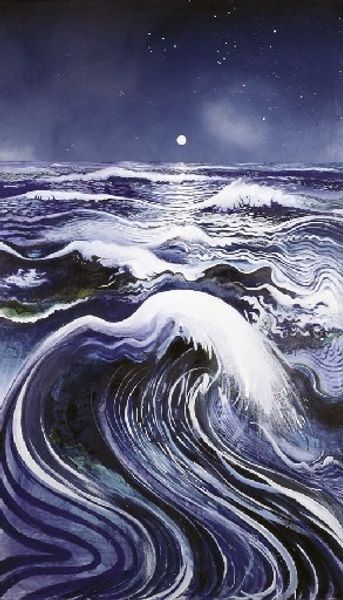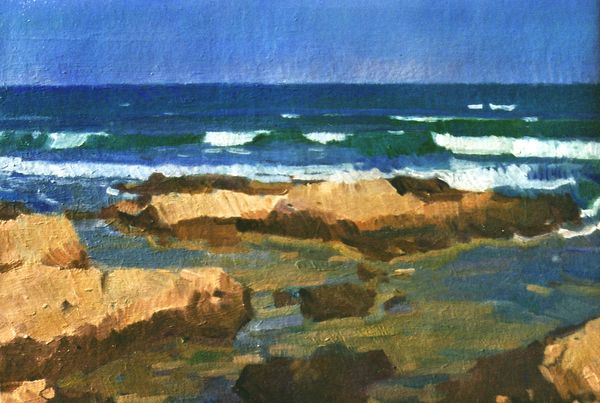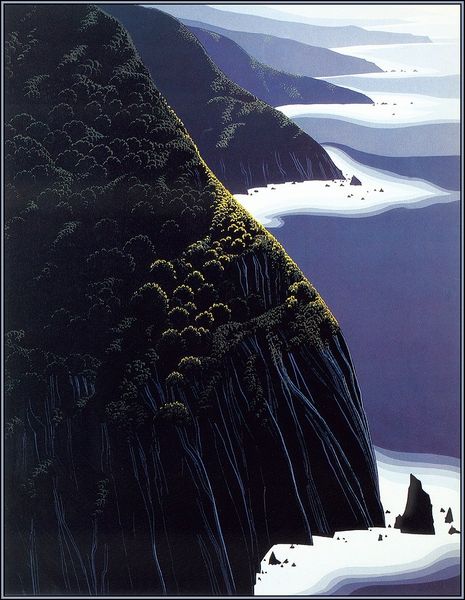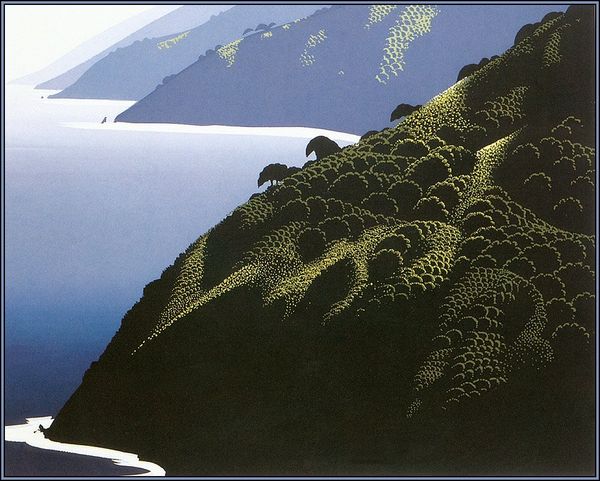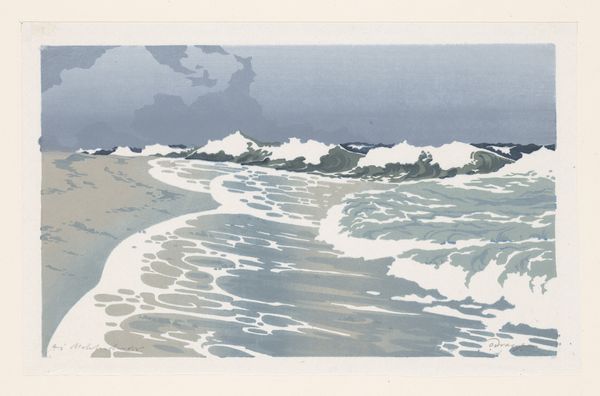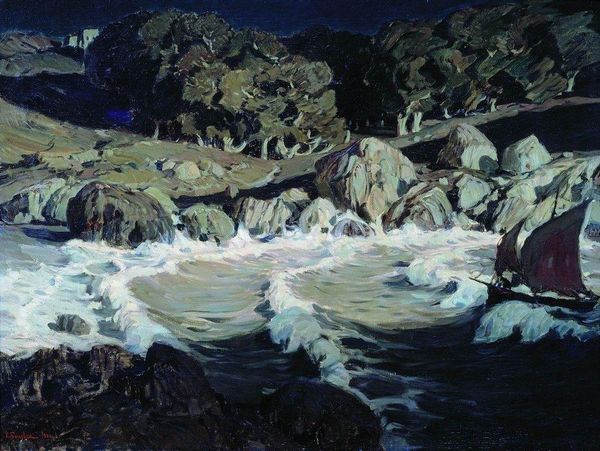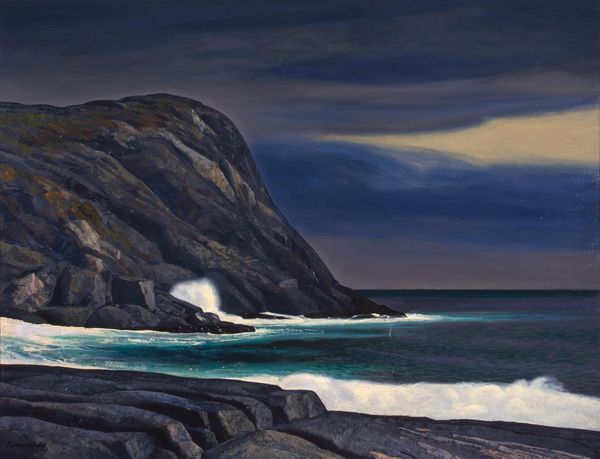
Copyright: Eyvind Earle,Fair Use
Editor: So, this is "The Wave," painted in 1990 by Eyvind Earle, using acrylic paint. The blues are so vibrant, but there’s a stillness, a sense of watching a frozen moment. How do you interpret this work? Curator: Immediately, I’m struck by the tension between representation and symbol. Earle simplifies the ocean, turning water into almost geometric shapes, stylized like an ancient crest. But it's not just the ocean, is it? It's a cultural memory of the sea. Do you notice how the horizontal lines seem to stretch infinitely? Editor: Yes, they make the sea seem to go on forever! Is that significant? Curator: Absolutely! It suggests an enduring, even timeless, quality. Waves themselves symbolize change, but the rigid structure here implies a kind of controlled, predictable transformation. And consider the wave crests. What emotions do they evoke? Editor: A little like controlled chaos, maybe? The wave is a powerful force, but it is somehow tamed or observed, held back? Curator: Precisely! This reminds me of heraldic emblems: symbols representing a continuous cycle viewed with respect, a kind of tradition passed down. Even the stylized forms resonate with early 20th-century design, harking back to art deco. So the ocean isn’t just a physical space. Editor: So, it’s not *just* a pretty seascape, but a deeper commentary about time and tradition represented through stylized cultural symbolism? Curator: Indeed! It suggests how visual symbols connect to cultural continuity, with psychological and historical context deeply embedded within these images. Editor: I never would have picked that up on my own. Thanks, that was amazing! Curator: My pleasure, it’s exciting to see new layers of significance revealed in what initially seems to be a simple seascape.
Comments
No comments
Be the first to comment and join the conversation on the ultimate creative platform.




